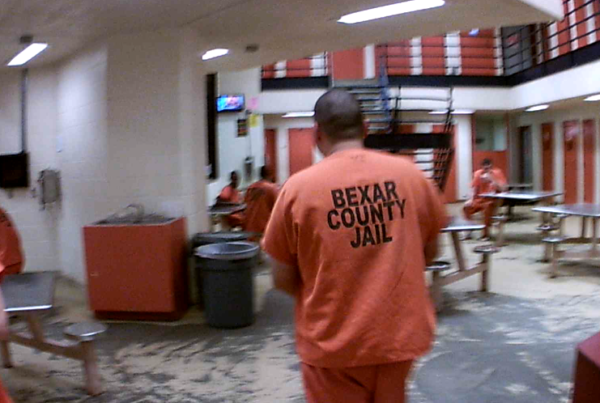All this week the Texas Station Collaborative will be answering the top five questions you asked us about the 2016 election as part of our statewide series, #TxDecides. Houston Public Media answers the second question and Texas Standard speaks to reporter Andrew Schneider about the story.
Joan Cunningham grew up in Canada and remembers watching people vote the old fashioned way: Fill out a paper ballot, drop it in a box. She understands electronic voting machines can be more efficient.
“But my professional life was spent as an epidemiologist. I used, and still do, computers a lot for everything I do. And I have some practical insights into the things that can go wrong, data that can get corrupted or changed or lost,” Cunningham says. She wonders how vote recording errors and even fraud, can be prevented when such machines generate no paper records for backup.
Pamela Smith says Cunningham’s concerns are legitimate. Smith is president of Verified Voting, a nonprofit, non-partisan group that examines the role of technology in elections.
“People sometimes think software is infallible,” Smith says, “but in fact it’s programmed by humans, and humans are not infallible. So you can have errors in programming. There have been actual errors in programming in past elections that have been uncovered by doing audits and recounts.”
That, Smith says, is one of the reasons for audits and recounts. In those cases, the main benefit of paper backups is providing a physical record of voter intent. It’s as much to reassure the individual voter as it is to provide proof for election officials. And in this unprecedented presidential election, voters are looking for more reassurance.
Texas officials, like Harris County Clerk Stan Stanart, want to lay these fears to rest. Harris County switched from punch cards to an electronic voting system in 2002. The current system uses no paper backups. But Stanart says there are checks and double-checks to make sure everything is working and untampered with.
“We have your vote recorded in three locations,” Stanart says, “That is, in the mobile ballot box, the actual internals of the judge booth controller, and every one of the eSlate voting machines that the voter actually casts their vote on.”
Experts say such systems aren’t perfect, but Stanart argues paperless is actually far more secure.
“The problems with paper are that you can run out of ink, a printer can break,” he says. “Then you get into a problem of, ‘OK, now what do I count?’ And also, the technology that it takes to cheat with paper, like we saw in the days when we had the punch cards, all it took was an icepick with a stack of cards to ram holes through the punch cards, either canceling out someone’s vote or voting for someone else.”
Paper ballot issues crop up regularly in the Rio Grande Valley. The area has a history of election fraud, and has been the subject of recent federal and state investigations.
“That’s also led to a lot of the voter apathy that we have,” says Morgan Cisneros Graham, chair of the Cameron County Republican Party and a member of the county’s election commission. “You know, it’s very unfortunate when I hear or read people say that they’re not going to bother to vote, because they know that the results are likely not to be accurate.”
So any election system, electronic or paper, is only as reliable as the people running it. Most counties vigorously vet and train poll workers to make sure they administer the systems fairly. Among them, this year will be Joan Cunningham, who asked the question that inspired this story.
“I felt that I needed to do my part, if you will, to ensure that all is well in the election upcoming,” Cunningham says. “So I went and took the training to be an elections judge, and I will be serving as an assistant judge at one of the polling stations here in San Antonio on Election Day.”
Though she’s lived in the U.S. for 30 years, Cunningham just became a citizen in 2014. This will be her first presidential vote.
Listen to the audio player above to hear our Q&A session with Andrew Schneider about voter fraud and electronic voting.















